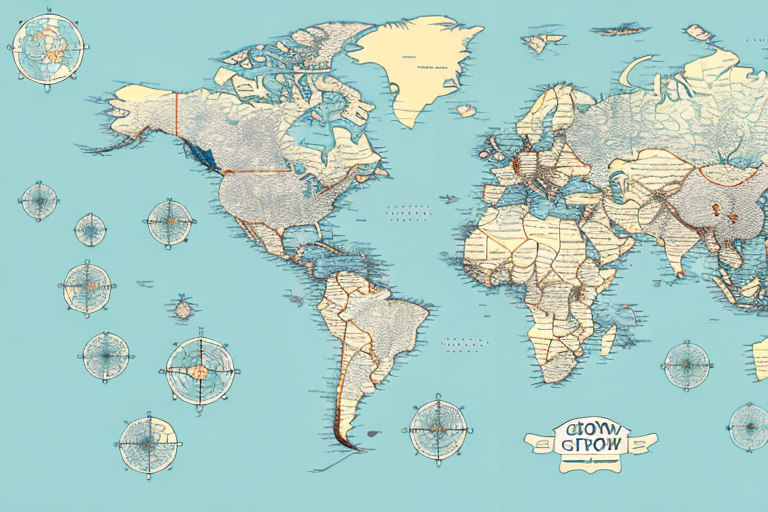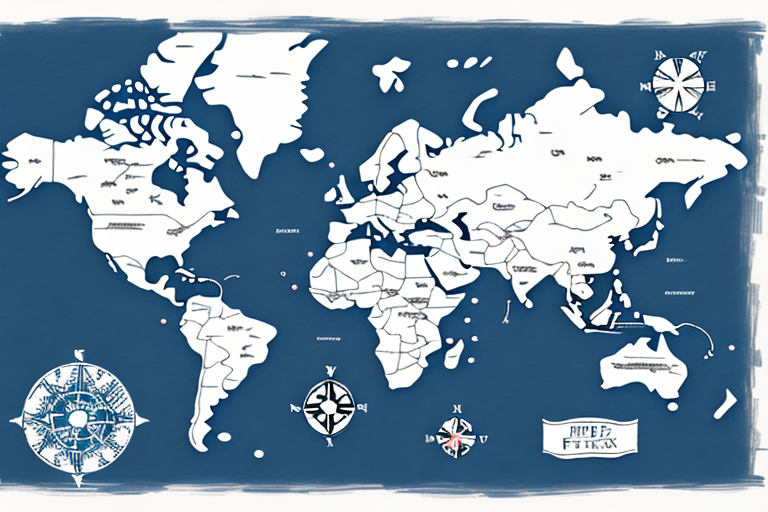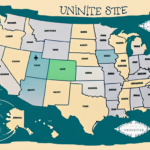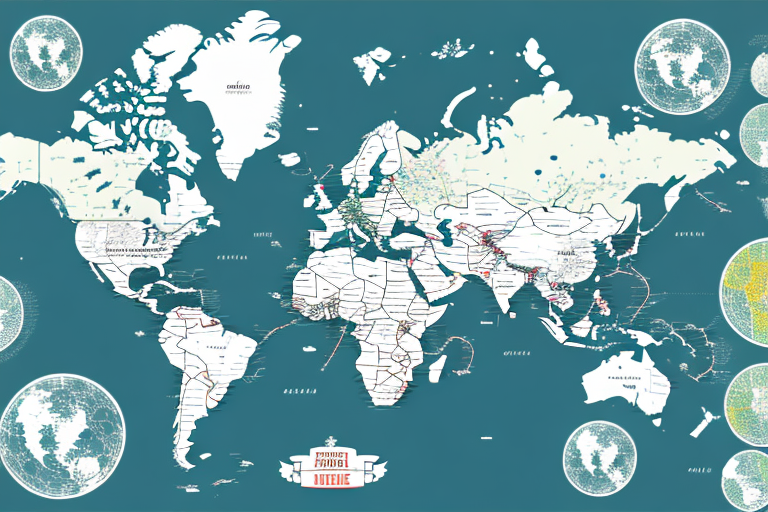What are Shipping Zones and Why Do They Matter for Your Business?
Shipping zones are geographical areas defined by shipping carriers to determine the cost of sending packages based on the distance between the origin and destination. These zones play a crucial role in calculating shipping fees, with higher zones typically indicating greater distances and, consequently, higher shipping costs.
For instance, FedEx divides the United States into eight shipping zones, where Zone 1 represents the closest areas to the origin and Zone 8 covers the farthest regions. Understanding your shipping zones can help businesses:
- Predict Shipping Costs: Accurately estimate expenses associated with delivering products to various locations.
- Optimize Logistics: Strategically plan shipping routes and fulfillment center locations to minimize costs.
- Enhance Profit Margins: Reduce shipping expenses, thereby increasing overall profitability.
It's important to note that each shipping carrier, such as UPS or USPS, has its own zoning system. Therefore, businesses should familiarize themselves with the specific zoning structures of the carriers they utilize to ensure accurate cost assessments and effective shipping strategies.
How to Determine Your Shipping Zone with FedEx
Identifying your FedEx shipping zone is straightforward. Follow these steps to determine the appropriate zone for your shipments:
- Visit the FedEx Zone Lookup Tool.
- Enter the ZIP codes for both the package origin and destination.
- The tool will display the corresponding shipping zone, along with estimated shipping rates and transit times.
Knowing your shipping zone allows you to estimate shipping costs more accurately and plan your logistics accordingly.
How FedEx Calculates Shipping Costs Based on Shipping Zones
FedEx determines shipping costs using two main factors: package weight and the shipping zone. Each zone has a specific rate per pound, which increases as the zone number rises. For example, shipping a 10-pound package from Zone 1 to Zone 2 will cost more than shipping the same package within Zone 1.
Additionally, FedEx offers various shipping services such as overnight, 2-day, and ground shipping, each with different pricing structures. Businesses that ship high volumes may be eligible for discounts, which can significantly lower shipping costs. Utilizing FedEx's online shipping tools and negotiating bulk shipping rates are effective ways to reduce expenses.
According to a Department of Transportation report, efficient shipping cost management can lead to savings of up to 15% for large-scale businesses.
Tips for Reducing Shipping Costs Using FedEx Zone Rates
Implementing strategic measures can help businesses minimize their FedEx shipping costs. Here are some effective tips:
1. Optimize Fulfillment Center Locations
By situating fulfillment centers closer to key customer bases, businesses can reduce the distance packages travel, thereby decreasing shipping costs associated with higher zones.
2. Negotiate Volume-Based Discounts
Leveraging your shipping volume to negotiate better rates with FedEx can lead to substantial savings. Businesses shipping regularly in large quantities are often eligible for significant discounts.
3. Consolidate Shipments
Combining multiple orders into a single shipment can lower overall shipping costs by reducing the number of packages and taking advantage of bulk shipping rates.
4. Use Proper Packaging
Ensuring that packages are appropriately sized and weighted can prevent additional charges and reduce the risk of damage. Utilizing lightweight materials and optimizing package dimensions can lead to cost savings.
5. Monitor and Analyze Shipping Data
Regularly reviewing shipping data helps identify patterns and opportunities for cost reduction. Analyzing which zones incur the highest costs can inform strategic decisions to optimize shipping routes.
Advantages of Using FedEx’s Zone-Based Shipping System for Your Business
FedEx's zone-based shipping system offers several benefits that can enhance a business's shipping strategy:
Accurate Cost Prediction
Understanding the zone of each shipment allows businesses to forecast shipping expenses accurately, facilitating better budgeting and financial planning.
Logistics Optimization
Strategically locating warehouses and fulfillment centers based on shipping zones can reduce transportation distances, leading to faster delivery times and lower costs.
Enhanced Tracking and Transparency
FedEx provides comprehensive tracking tools that offer real-time updates on package status. This transparency improves customer satisfaction and allows businesses to quickly address any shipping issues.
Scalability
As businesses grow, FedEx's zone-based system scales accordingly, accommodating increasing shipping volumes without compromising on cost efficiency.
Common Mistakes to Avoid When Calculating FedEx Zone Rates
Avoiding common pitfalls can ensure more accurate shipping cost calculations and prevent unexpected expenses:
1. Failing to Update Shipping Addresses
Outdated or incorrect shipping addresses can result in packages being assigned to the wrong zones, leading to inaccurate cost estimates and potential delays.
2. Ignoring Package Dimensions and Weight
Underestimating or inaccurately measuring package size and weight can result in higher shipping costs or rejected shipments. Always use precise measurements when calculating costs.
3. Not Utilizing Shipping Software
Relying solely on manual calculations increases the risk of errors. Investing in advanced shipping software can streamline the process and improve accuracy.
4. Overlooking Available Shipping Services
Ignoring the range of FedEx shipping services can lead to overpaying for faster delivery than necessary. Assess delivery requirements to choose the most cost-effective service option.
5. Neglecting to Review Shipping Contracts
Failing to periodically review and renegotiate shipping contracts can result in missed opportunities for cost savings and discounts.
How to Negotiate Better Rates with FedEx by Understanding Zone-Based Pricing
Negotiating favorable shipping rates with FedEx becomes easier when you have a comprehensive understanding of zone-based pricing. Here are strategies to enhance your negotiation:
1. Leverage Shipping Volume
Businesses with substantial shipping volumes hold more bargaining power. Presenting consistent and high shipment numbers can lead to better rate agreements.
2. Analyze Shipping Patterns
Understanding which zones your shipments frequently travel can help you identify areas where you can consolidate shipments or adjust fulfillment center locations to reduce costs.
3. Explore Alternative Shipping Options
Consider using different FedEx services that may offer lower rates for your shipping needs. For example, ground shipping might be more economical for non-urgent deliveries compared to express services.
4. Bundle Services
Negotiating bundled services, such as combining shipping with other FedEx services like packaging or supply chain solutions, can result in overall cost reductions.
5. Maintain a Strong Relationship with FedEx Representatives
Building a positive and professional relationship with your FedEx account manager can facilitate smoother negotiations and access to exclusive deals or discounts.
A Comparison of FedEx’s Zone-Based Pricing vs. Other Shipping Carriers
When evaluating shipping options, it's essential to compare FedEx's zone-based pricing with other carriers to determine the most cost-effective solution for your business. Here's a comparison with some major carriers:
FedEx vs. UPS
Both FedEx and UPS use zone-based pricing, but their zone structures and rates may differ. For example, FedEx typically has eight shipping zones, while UPS has a similar but slightly different zoning system.
FedEx vs. USPS
The United States Postal Service (USPS) employs a different pricing model that does not rely solely on zones but also factors in package size and delivery speed. USPS can be more cost-effective for smaller packages and lower shipping volumes.
FedEx vs. DHL
DHL specializes in international shipping and offers competitive zone-based pricing for global shipments. For businesses with significant international shipping needs, DHL might provide better rates and services outside the United States.
According to [Forrester Research](https://www.forrester.com/report/The-State-Of-Logistics-2023/RES190678), businesses can save up to 20% annually by choosing the right carrier based on their specific shipping profiles and needs.
How to Use Technology to Simplify the Process of Calculating Your FedEx Zone Rates
Integrating technology into your shipping strategy can significantly streamline the process of calculating FedEx zone rates and managing shipments:
1. Shipping Software and Platforms
Advanced shipping software, such as ShipStation or Shippo, automates zone calculations, rate comparisons, and label creation, reducing manual effort and errors.
2. Real-Time Tracking Tools
Utilizing FedEx's real-time tracking and monitoring systems allows businesses to track shipments efficiently, predict delivery times accurately, and manage exceptions proactively.
3. Integration with E-commerce Platforms
Integrating shipping tools with platforms like Shopify or WooCommerce enables seamless order processing and automated rate calculations, enhancing operational efficiency.
4. Data Analytics
Employing data analytics tools helps businesses analyze shipping trends, monitor costs, and identify opportunities for optimization based on zone-based data.
According to a report by McKinsey & Company, businesses that leverage shipping technology can reduce their shipping costs by up to 25%.
Best Practices for Managing Your Shipping Strategy with FedEx Zones in Mind
Implementing the following best practices can help businesses effectively manage their shipping strategies while considering FedEx zones:
- Regularly Update Shipping Addresses: Ensure that all shipping addresses are current to avoid incorrect zone assignments and unexpected costs.
- Consolidate Shipping Volume: Combine shipments where possible to maximize volume discounts and reduce the number of packages.
- Strategically Locate Fulfillment Centers: Positioning fulfillment centers closer to primary customer zones can minimize shipping distances and costs.
- Utilize Advanced Shipping Software: Implement tools that automate rate calculations and optimize shipping routes based on zone data.
- Review Shipping Data Regularly: Analyze shipping patterns and costs to identify areas for improvement and implement cost-saving measures.
- Offer Multiple Shipping Options: Provide customers with various shipping speeds and methods to cater to different needs and encourage cost-effective choices.
Adhering to these practices ensures a cost-efficient and responsive shipping strategy that aligns with FedEx's zone-based pricing model.
Real-World Examples of Companies that Optimized Their Shipping Costs with FedEx Zones
Many businesses have successfully utilized FedEx's zone-based pricing to optimize their shipping costs. Here are some notable examples:
E-commerce Retailer
An online retailer specializing in electronics strategically relocated their fulfillment centers closer to their largest customer bases. By doing so, they reduced the average shipping zone for their shipments, resulting in a 15% decrease in shipping costs annually.
Manufacturing Company
A manufacturing firm consolidated its shipping volume and engaged in bulk shipping agreements with FedEx. This negotiation, based on their high shipping volume, secured a 20% discount on zone-based rates, significantly lowering their overall logistics expenses.
Food Delivery Service
A regional food delivery service analyzed their delivery routes and grouped orders by FedEx zones. By optimizing their delivery schedules and routes based on these zones, they reduced their shipping costs by approximately 18% while maintaining timely deliveries.
Clothing Retailer
A clothing brand utilized FedEx's various shipping options to determine the most cost-effective method for each order. By opting for ground shipping where appropriate and reserving express services for urgent deliveries, they achieved a 12% reduction in shipping expenses.
These real-world examples demonstrate how understanding and leveraging FedEx's zone-based pricing can lead to substantial cost savings and enhanced operational efficiency.




















